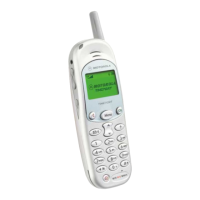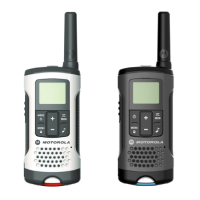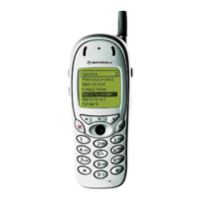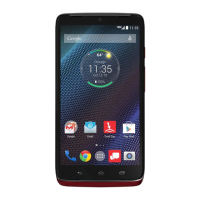RFR3300 Theory:A06
This document is propriety of MOTOROLA and it
should be return if not used .
Distribution and copies of this document are not
allowed with out MOTOROLA approval.
BOARD - P6.0
1 RFR3300 Overview
This section describes the Tri-Band/Quad-Mode RF-to-IF Analog Receive Integrated Circui
(RFR3300 IC). The RFR3300 is a custom device fabricated in a SiGe BiCMOS process. It contains all
of the circuitry (with the exception of external filters and LO synthesizer) needed to support conversion
of received CDMA, GPS, and AMPS RF signals to IF signals capable of driving the IFR3300 IF-to
Baseband Analog Receive IC in any of the following four phone platforms: Quad-mode (PCS, GPS,
Cellular CDMA, and AMPS) with a dual-band VCO, PCS only, Dual-Band (PCS CDMA, Cellular AMPS)
with a single-band VCO, and Dual-Mode (Cellular CDMA, AMPS). Each platform can support GPS. The
circuitry in the RFR3300 consists of three Low Noise Amplifiers (GPS, Cellular, and PCS), four RF-to-IF
Down converting Mixers, a divide-by-2 LO frequency divider, and an LO Buffer Amplifier to buffer the
UHF VCO to the UHF Transmit Up converter. The RFR3300 device offers the most advanced and
integrated CDMA Rx solution designed to meet cascaded Noise Figure (NF) and Third-order Intercep
Point (IIP3) requirements of IS-98, J-STD-018, and ARIB-T53 specifications for Sensitivity, Two-tone
Intermodulation, and Single-tone Desense.
Gain control for the RFR3300 devices Cellular LNA is provided for improved dynamic range and
Rx performance in the presence of high-level interfering signals. Operating modes and band selection
are specially controlled from the MSM330
0ο.σι
Mobile Station Modem. Designed to meet the
requirements for global CDMA markets, the RFR3300 device will operate over the following frequenc
ranges:
Cellular: 832 894 MHz
PCS: 1841 1990 MHz
IMT: 2110 2170 MHz
GPS: 1575.42 MHz
75

